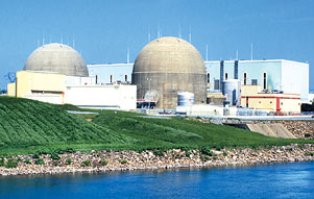 |
| North Anna (Image: Dominion) |
Dominion Virginia Power's twin pressurized water reactors shut down when the magnitude 5.8 earthquake struck on 23 August. The reactors were shaken more strongly than anticipated in the plant's design, and have remained offline for an extensive program of inspections, testing and analysis costing the utility more than $21 million and involving more than 100,000 man-hours of work.
After analysing inspection findings and other information, the NRC has now ruled that the units can be restarted. NRC Office of Nuclear Reactor Regulation director Eric Leeds said the regulator had asked Dominion "dozens of detailed questions" as well as examining Dominion's answers and information from its own inspections. "We're satisfied the plant meets our requirements to restart safely, and we'll monitor Dominion's ongoing tests and inspections during the startup of both reactors," he promised.
The restart process has now begun at North Anna unit 1. Once the first unit is online, the same process will begin for unit 2. Dominion anticipates that it will take about ten days to bring the units to their full combined power of 1842 MWe. The process is being prolonged from the usual four days taken to bring a unit back from cold shutdown to allow for additional equipment tests and extra safety precautions as this is the first time that a reactor has been shut down by an earthquake in the USA, Dominion explained.
The NRC has documented several additional quake-related actions that Dominion is to undertake, including additional characterization of the geological fault responsible for the 23 August earthquake and updating seismic monitoring equipment for the reactors and dry-cask spent fuel storage facility.
Researched and written
by World Nuclear News





_18570.jpg)
_16159.jpg)
_49205.jpg)





